OneStream in The Gartner Magic Quadrant for Financial Planning Software
OneStream named a leader in the 2023 Gartner Magic Quadrant for Financial Planning Software
Please note that Gartner does not endorse any vendor, product or service depicted in its research publications, and does not advise technology users to select only those vendors with the highest ratings or other designation. Gartner research publications consist of the opinions of Gartner’s research organization and should not be construed as statements of fact. Gartner disclaims all warranties, expressed or implied, with respect to this research, including any warranties of merchantability or fitness for a particular purpose.
A LEADER IN FINANCIAL PLANNING SOFTWARE
OneStream in The Gartner Magic Quadrant
Financial planning software facilitates FP&A transformation and covers planning, budgeting, forecasting, modeling, performance reporting and agile insights. FP&A leaders can use this research to assess vendors best suited to offer technology solutions for their FP&A processes.
Market Definition/Description
Gartner defines financial planning software as the key tool that enables organizations to automate and streamline their enterprise-wide financial planning processes. The software supports planning, budgeting and forecasting processes by connecting relevant operational and driver data to profit and loss, balance sheet and cash-flow financial statements. Additionally, the software offers enhanced decision support and analytics that can be customized to unique planning requirements. To provide this support, financial planning software offers data integration, data modeling, reporting and workflow capabilities, which all enhance a user’s ability to effectively manage the planning process and their organization’s financial performance.
Organizations use financial planning software to improve their financial planning and decision-making processes. These solutions streamline planning, budgeting and forecasting processes by providing visibility to planning data, consistent application of logic and planning process governance. When implemented in support of sound processes, financial planning software gives organizations reliable outputs to make better informed decisions. This results in improved end-to-end financial planning processes, including aligning strategic priorities with resource allocation to drive improved business outcomes.
The common use-case scenarios or business problems addressed by financial planning tools include:
Efficiency
This involves automating and streamlining planning processes by eliminating time-consuming and error-prone manual data-gathering processes. It also involves integrating various data sources and enhancing collaboration to minimize the administrative non-value-add burden historically associated with planning processes. Collaboration features allow planners to enter data simultaneously, resulting in greater confidence in the inputs and outputs used to make decisions.
Improved Operational Visibility and Management
This applies to providing insights into key financial and operational performance metrics such as revenue, expenses and profitability. By having this information readily available, organizations are better equipped to assess and provide actionable insights based on the entirety of their data assets. Users can identify areas where improvements can be made to increase efficiency and drive value creation for the organization.
Complex Business Environment
This encompasses facilitating the integration of financial systems and processes in a complex business environment. It includes providing clear data integration approaches, modeling and analytics capabilities to organizations with high process complexity, a high degree of and varied data granularity, and usually, multiple business lines with various ERP systems, charts of accounts and customer bases across the world.
Must-Have Capabilities
The must-have capabilities for this market include:
- End-to-end management of enterprise-wide financial planning, budget and forecasting processes — This entails supporting flexible end-user-driven modeling capabilities, customizable planning dimensions and consolidations at the enterprise and business functional level.
- Administration functionality necessary to support planning activities — This involves the creation and pre-population of new planning cycles, modification of business rule logic, dimension maintenance and security profile functionality.
Standard Capabilities
The standard capabilities for this market include:
- Configurable user-friendly reporting and dashboarding — This applies to the ability to generate financial statement reporting (i.e., balance sheet, income statement and cash flow). It also applies to gaining actionable insights into the financial or operational performance of an organization through dashboarding visualizations that allow for a more cross-functional and inclusive approach when explaining trends and results.
- Built-in audit trails and versioning — This involves the ability to monitor events that occur within the system including data entry, data changes within the planning process and versioning to help users track the evolution of their data and models.
Gartner Quadrants for Financial Planning Software
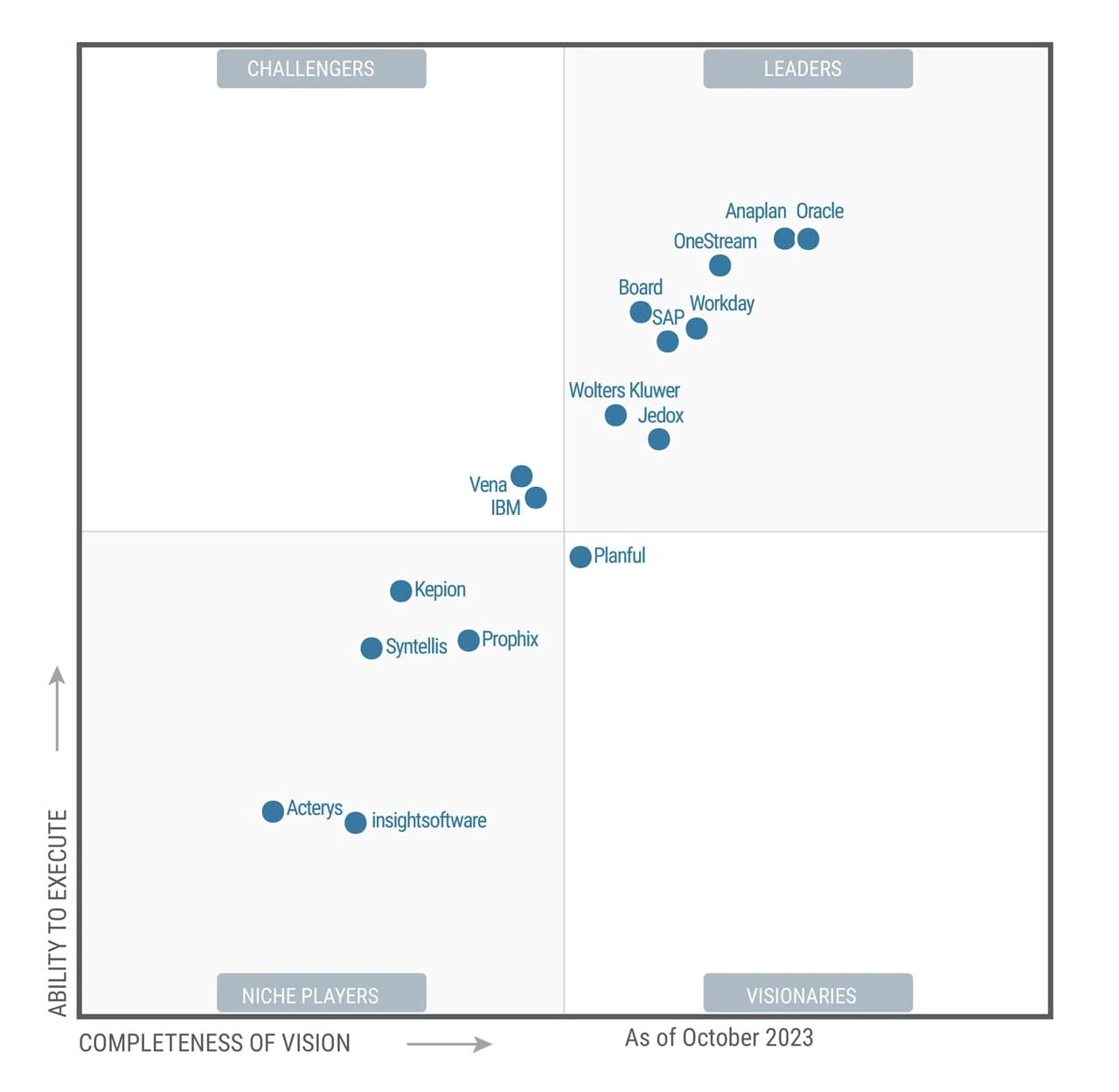
Vendor Strengths and Concerns

Acterys for Financial Planning Software
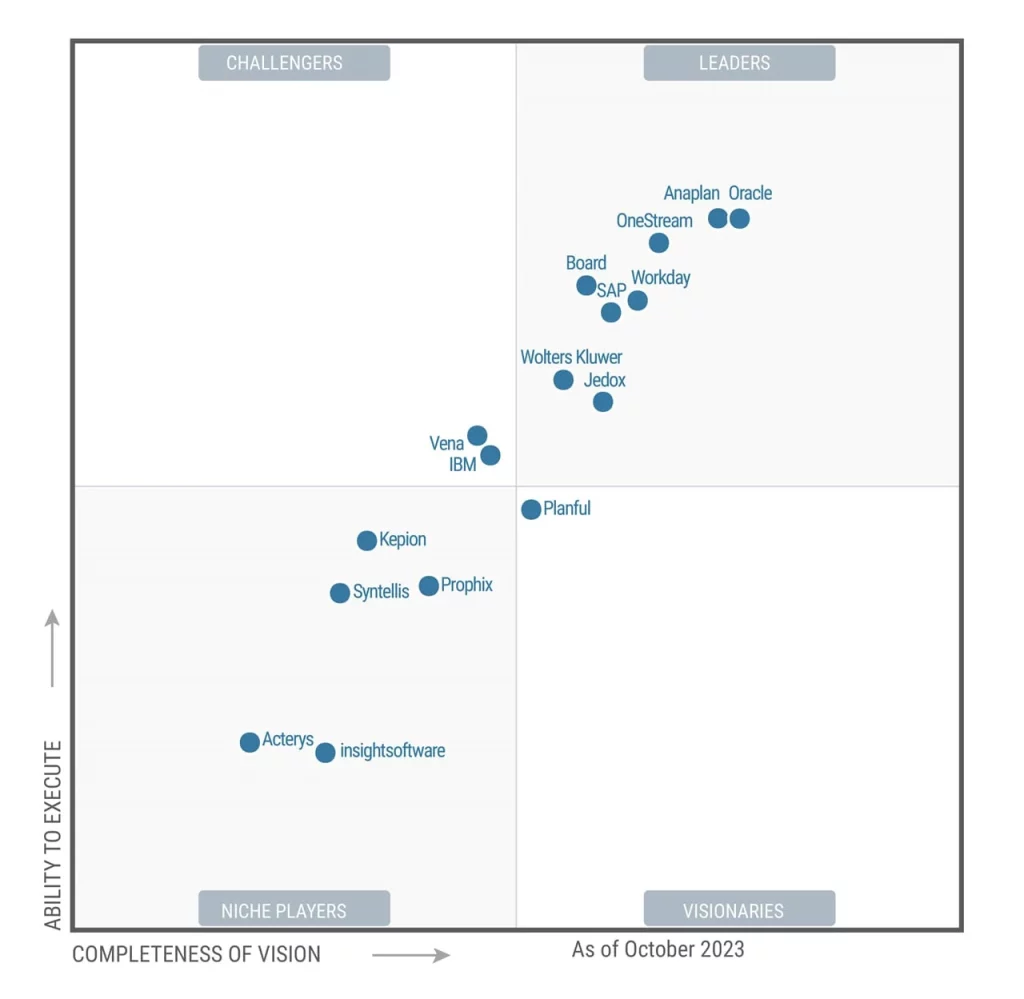
Acterys is a Niche Player in this Magic Quadrant. Its product, Acterys xP&A, offers data model creation in a cloud or on-premises data warehouse from any data source and provides Power BI visuals and planning capabilities. Acterys is a private company with customers worldwide and the majority in North America. It serves clients in an array of verticals; its top three include energy and utilities, professional services and manufacturing. An innovative feature is its Microsoft product integration, which includes Power BI, SQL and Excel and allows for customer app creation and write-back data from Power BI. In 2024, Acterys plans to release automated AI data models for enhanced forecasting.
Strengths
- Configurable data models: Acterys automatically generates models with its listed source system connectors or uses Power BI Sync to import any Power BI data model. This may benefit Azure and Power BI user companies that have already invested in developing in Microsoft 365 and the Power Platform ecosystem.
- Reporting: Acterys offers graphics certified with International Business Communication Standards, profit and loss visuals, and a board reporting template. Users can access logic written with Data Analysis Expressions (DAX) in the product’s matrix and user-friendly calculations on screen in the profit and loss visual.
- Vertical/industry templates: Acterys’ Rapid Results Packs are tailored solutions designed for sectors such as financial services, insurance, government, life sciences and others. These packs come preloaded with a suite of data models, templates, dashboards and analytical components that are ready to use out of the box.
Concerns
- Workflow capabilities: Acterys offers basic task management functionality and lags behind other vendors who offer out-of-the-box visual workflow planning capability, metrics to understand bottlenecks and features that help orchestrate the planning process. Clients looking for advanced workflow features might find this product falls short of their needs.
- Administrative configuration: Due to Acterys’ integration with Microsoft products, users should be aware that some security, data integration, data modeling and logic writing features can be configured in the Acterys Modeller or the Microsoft environment. To avoid a potential error and mitigate unnecessary risk, customers should clarify the governance approach through a documented framework.
- Pricing: Some Acterys features, such as connection to Microsoft Fabric, require Power BI Pro or Premium licensing. Prospective customers requiring these features should assess whether this level of licensing is covered in their existing Microsoft 365 subscription when comparing pricing.
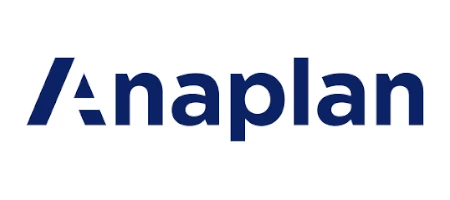
Anaplan for Financial Planning Software

Anaplan is a Leader in this Magic Quadrant. Its product, the Anaplan platform, is a cloud-native modeling technology that enables connected planning, budgeting and forecasting with real-time connectivity on a single platform and unified codebase. Anaplan is a private company with customers worldwide and the majority in North America. It serves clients in an array of verticals; its top three include technology; professional services; and banking, finance and insurance. An innovative feature is Hyperblock, a patented engine enabling multidimensional scenario modeling that can recalculate billions of cell values. In 2024, Anaplan expects to enhance its data integration and management capabilities and its AI conversational chat, including NLQ capabilities.
Strengths
- Implementation strategy: Anaplan’s global professional services team works alongside its certified partner network to ensure efficient implementation with support based on industry best practices. The company’s agile implementation method emphasizes transparency and flexibility, elevating deployment quality and enhancing customer satisfaction.
- Integrated planning: Anaplan supports IBP. It connects the planning process and data across finance, supply chain, sales and marketing, and human resources, all within the same vendor solution and on a single platform.
- Research and development: Anaplan’s market research teams collaborate closely to gather feedback for product development. The teams consist of experts from finance, supply chain, sales and workforce planning who address emerging customer needs via advisory boards. Its recent findings drove the development of a new, comprehensive data management solution that supports the diverse datasets needed for planning.
Concerns
- Available license visibility: Anaplan’s product does not natively report visibility into users and available license count in the administration portal, limiting an administrator’s ability to ensure compliance with software licensing agreements. License management reporting, however, is part of its product roadmap.
- Workflow capabilities: Anaplan’s workflow capability lags other vendors who provide features such as charts, pivot filters and broadcasting capabilities. As it recently released a new visual workflow capability, prospective clients should thoroughly evaluate whether these new additions align with their specific needs and requirements.
- Pricing: Customers needing extra workspace beyond Anaplan’s current allocation may need to buy additional space. When comparing costs with other vendors, customers should scope and evaluate their current and future workspace and deployment requirements to comprehensively estimate expected costs.

Board for Financial Planning Software

Board is a Leader in this Magic Quadrant. Its product, also called Board, integrates planning processes in a single platform, offering strategy, finance and operations with real-time analysis and data sharing. Board is a private company with customers worldwide and the majority in Europe. It serves clients in an array of verticals; its top three include manufacturing, retail and professional services. An innovative feature is its new Azure Machine Learning integration, which uses AI and ML algorithms as part of budgeting and forecasting processes. In 2024, Board plans to build on its extended ModelOps support and provide faster planning applications with features based on GenAI, including LLM technology foundations.
Strengths
- Data integration: Board supports more than 270 API connections to source systems, 59 of which are certified. Certified APIs include ERP and non-ERP sources that are popular with Gartner clients, such as SAP, Oracle Cloud, Microsoft Dynamics 365, Salesforce and Workday.
- Workflow automation: Board has a strong workflow capability with several notable features. In addition to graphical status reports providing a clear view of processes, issues, bottlenecks and delays, it offers integration with Microsoft Teams to orchestrate approval processes, which may be particularly attractive for organizations that use Microsoft products.
- Market responsiveness: Board directly engages customers through community feedback and has effectively delivered on items outlined in its 2022 and 2023 roadmap. Fulfilling these commitments is essential to instill confidence in its roadmap, enhancing customer trust in its planned initiatives.
Concerns
- Pricing: Board offers ML capabilities enabled by Azure, which comes with an additional annual cost. While not unusual for advanced prediction engines, ML features among vendors vary, and customer evaluation teams should assess alignment with their current and expected use cases.
- Product enhancements: Board’s recent releases include functionalities that some Leaders already have, such as API development, integration with Azure Machine Learning, upgrades to the user interface and the multidimensional engine for greater capacity. Potential clients should assess the alignment of current and planned features to meet their evolving requirements.
- Vertical strategy: Although Board has specific planned market share initiatives for the retail sector, its vertical strategy for other sectors is still evolving and currently only targets customers aligned with its ideal personas. Prospective clients should assess industry alignment to ensure their business needs are effectively met.
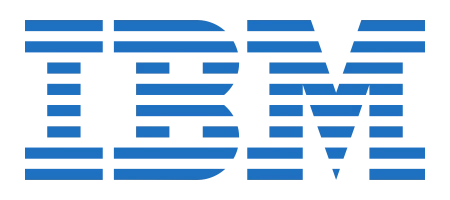
IBM for Financial Planning Software

IBM is a Challenger in this Magic Quadrant. Its product, IBM Planning Analytics, is a configurable platform for financial and operational planning, which includes an in-memory TM1 calculation engine for high-performance processing speed. IBM is a public company with customers worldwide and the majority in Europe. It serves clients in an array of verticals; its top three include retail; manufacturing; and banking, finance and insurance. An innovative feature is its AI forecasting capability, which uses IBM watsonx technology to include explainability along with forecast confidence bounds. In 2024, IBM plans to offer multivariate forecasting for generating and analyzing alternate forecast scenarios.
Strengths
- Capacity: IBM’s TM1 server supports fast and sparse consolidation algorithms and ensures efficient performance across large models and high levels of concurrent users. This results in a large number of individual cube limits, supporting customers with detailed SKU-level planning needs and high-performance data handling.
- AI/ML predictive analytics: IBM Planning Analytics provides direct integration with watsonx.ai and IBM Decision Optimization, useful for organizations with constraint-based planning needs. IBM’s watsonx includes a data store and data science platform for GenAI and ML. Users have cited its capability in complex analytic modeling as a strength in Gartner Peer Insights.
- Customization: IBM’s product offers advanced out-of-the-box configuration and capacity, benefiting clients with unique requirements where standardized financial logic and templates do not work. It also offers blueprints with industry-specific model development best practices.
Concerns
- Model configuration: While IBM’s product offers noteworthy flexibility and configurability, it requires more user expertise. Other vendors offer more low-code model development, Excel-like programming syntax, autodetect modeling capability and model development review programs to decrease the need for developer expertise.
- API connectors: IBM does not have out-of-the-box API connections to ERP and non-ERP systems such as CRM and inventory management. Clients must ensure data is sourced via a relational database connection and assess whether extra resources are required to develop them.
- Implementation strategy: IBM primarily depends on its partner network for solution implementation, while some vendors adopt a more direct approach, actively engaging in the implementation process. Prospects should consider their preference for vendor involvement in the implementation process.
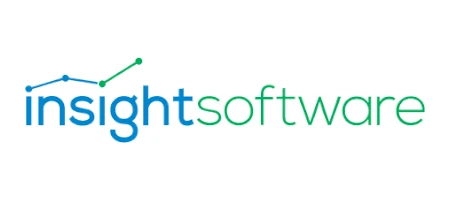
InsightSoftwarefor Financial Planning Software

insightsoftware is a Niche Player in this Magic Quadrant. Its product, Bizview, offers web-based budgeting, planning and forecasting with an Excel-like interface and self-service reporting, dashboards and analytics. insightsoftware is a private company with Bizview customers worldwide and the majority in Europe. It serves clients in an array of verticals; its top three include energy and utilities, communications and telecom, and manufacturing. An innovative feature is its automated budgeting and planning workflows, which streamline approval processes and enhance collaboration. In 2024, insightsoftware plans to add Azure Machine Learning and integration to enhance planning speed and accuracy.
Strengths
- Workflow automation: insightsoftware’s menu-driven workflow builder enables efficient development and execution of FP&A workflows and creation of data flows and dashboards, reducing manual FP&A inputs. Chat collaboration tools and email notifications further facilitate task automation and process timeline management.
- Offering strategy: insightsoftware demonstrates a customer-driven approach to product strategy. It sources and acts on customer input from advisory boards, direct feedback and an innovation portal, which has resulted in new user-driven roadmap features such as workflow notifications.
- Scenario modeling: insightsoftware provides an intuitive scenario-modeling interface where users can generate new scenarios, copy data between scenarios, seed scenarios from historical data and extrapolate forward to populate budgets and forecasts, which can reduce user process cycle times. It also supports unlimited simultaneous scenarios, as well as sandboxing and stacking.
Concerns
- Innovation: insightsoftware innovations have lagged behind some vendors with features such as ESG reporting, GenAI, predictive ML and Monte Carlo simulations. Potential customers may find this hinders their ability to deliver emerging planning, analysis and reporting requirements.
- Vertical strategy: insightsoftware does not offer industry-specific starter kits or solutions, but it plans to develop vertical solutions via its content development team. Users should carefully assess whether their industry-specific needs can be comprehensively met.
- Predictive transparency: Correlation statistics and tracking predictions are not typically shared with insightsoftware’s users. This restricts users’ ability to compare algorithms and establish buy-in for top-down forecasts. Some vendors complement predictive forecasts with a broader set of statistics, aiding top-down forecast adoption.
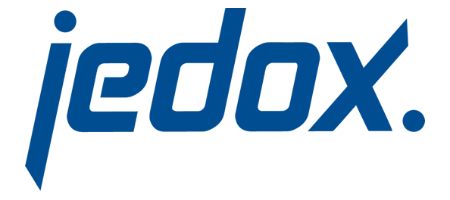
Jedox Financial Planning Software

Jedox is a Leader in this Magic Quadrant. Its product, Jedox EPM software, is a planning and performance management platform for budgeting, forecasting and reporting with AI, an in-memory database and customizable prebuilt models. Jedox is a private company with customers worldwide and the majority in Europe. It serves clients in an array of verticals; its top three include manufacturing, retail and technology. An innovative feature is its AIssisted planning with AI and ML to support self-service and finance autonomy. In 2024, Jedox plans to release analysis and scenario planning driven by GenAI and natural language.
Strengths
- Market understanding: Jedox demonstrates a strong understanding of current and potential future trends in automation and analytics across all areas of financial planning software. This includes data ingestion and refinement, predictive analytics, decision-making efficiency and planning contributor productivity.
- Data integration: Jedox Integrator connects to any data source and can perform complex extract, transform and load operations. Jedox AIssisted Planning provides wizard-driven configuration of data cleansing, data refinement, driver identification and analysis, prediction and intelligent commenting of data. It also offers GenAI capabilities to transform unstructured data.
- ESG planning capability: Jedox’s configurable Best Practice Accelerator model for ESG provides templates for data collection, workflows, reporting and dashboards that meet ESR standards. Users can adjust relevant KPIs and set long-term targets bridging financial and nonfinancial data.
Concerns
- Offering strategy: Although Jedox’s product development incorporates customer feedback, its process for evaluating and prioritizing that feedback is maturing. In contrast, some Leaders use more formal frameworks to ensure well-informed feature prioritization.
- Integrated planning: Jedox provides generic logic to automatically link integrated planning elements to one another (e.g., balance sheet and cash flow), so configuration of individual cash flow statements is necessary. Some Leaders offer this natively and provide prebuilt, integrated planning configurations. Customers prioritizing this functionality should account for the extra time and effort this implementation will require.
- Capacity: Jedox does not have specific algorithms to mitigate data sparsity. The lack of such mitigation can cause system performance issues with latency in data input and retrieval (life cycle reporting and queries), which has been reported through Gartner Peer Insights feedback.

Kepion Financial Planning Software

Kepion is a Niche Player in this Magic Quadrant. Its product, Kepion FP&A Essentials, provides cloud financial planning and analytics with real-time data and analysis, as well as Microsoft tools, including Azure and Power BI. Kepion is a private company with customers worldwide and the majority in North America. It serves clients in an array of verticals; its top three include manufacturing; life sciences; and banking, finance and insurance. An innovative feature is its Kepion Data Rule Editor, which does not require scripting and offers customized use cases. In 2024, Kepion plans to release a reporting platform for ad hoc analysis views.
Strengths
- Master data management: Kepion’s data hub provides comprehensive connector, extract, transform, validation and loading capabilities, empowering users to manage data from external sources and within the application module. Master data management is included in the product price.
- Data integration: Kepion supports over 100 APIs, enabling data integration with popular ERP, CRM and SCM systems. It provides valuable benefits to customers looking for enhanced flexibility and integration options.
- Market responsiveness: Kepion captures user needs through mechanisms such as surveys, an online community, an innovation hub and support teams. Customer feedback drove several recent product enhancements, including export to PDF, enabling users to use single sign-on (SSO) across web applications and out-of-the-box allocation functionality.
Concerns
- Innovation: Kepion’s AI roadmap and planned predictive analysis features lag behind other vendors, and its AI innovations lack precision. Its intention to incorporate Microsoft Azure OpenAI for enhanced forecasting and automation lacks specific details until next year, whereas other vendors have a clear AI vision with defined features for their future AI offerings.
- Vertical strategy: Kepion supports industry-specific starter kits or solutions only in the education, manufacturing and professional services sectors, while employing a partner-driven approach in other industries. Users not specifically in these industries should carefully assess whether their industry-specific needs can be comprehensively met.
- Dashboard and report access: Kepion does not provide a direct means for nonlicensed users on the platform to distribute and access reports and dashboards. Some vendors provide options such as view-only users and contributor add-ins.
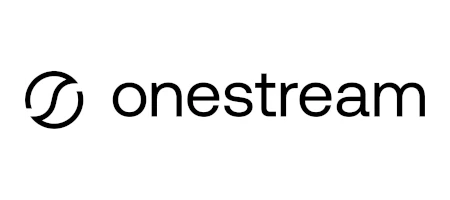
OneStream Financial Planning Software

OneStream is a Leader in this Magic Quadrant. Its product, the OneStream Intelligent Finance Platform, offers corporate planning processes, including data management, planning, reporting, analytics, and financial close and consolidation. OneStream is a private company with customers worldwide and the majority in North America. It serves clients in an array of verticals; its top three include manufacturing; professional services; and banking, finance and insurance. An innovative feature is its Sensible ML solution, which provides multiple forecasting algorithms and built-in driver libraries. In 2024, OneStream plans to release GenAI capabilities, providing platform enablement and intelligence through financially aware LLM interaction.
Strengths
- Data volumes: OneStream has one of the fastest data transfer times and user concurrency levels among vendors. Relational blending and data sparsity algorithms are two back-end features that help stabilize system performance at high data volumes and user concurrency levels.
- Innovation: OneStream has a strong roadmap, including items to enhance its current Sensible ML capabilities with better scenario modeling. It is also exploring tools to benefit customers with future functionality for AI-generated commentary and business rule optimization.
- Solutions exchange: Through the OneStream Solution Exchange, customers have add-on productivity and business solutions developed by OneStream, partners and customers. Users can download, configure and deploy these offerings into their existing application to address functional and industry-specific requirements. It includes solutions such as people planning, manufacturing planning, capital expense planning and sales planning.
Concerns
- Proofs of concept: OneStream provides limited proofs of concept. If potential customers expect this demonstration of feasibility to be part of their evaluation process, they will need to take a different approach by being deliberate in defining use cases and seeking references that specifically address them.
- Pricing: OneStream enables its Sensible ML solution through the AI services layer of the platform, which comes with an additional annual cost. While not unusual for advanced prediction engines, ML features among vendors vary. Customer evaluation teams should assess alignment with their current and expected use cases.
- Vertical/industry tools: OneStream offers acceleration packages and templates for major industries through its partners. However, it does not offer templates for education, life sciences, professional services, and transportation and logistics. Customers in these industries should carefully assess the design and time to value of a proposed solution.
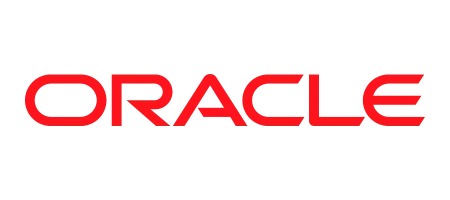
Oracle Financial Planning Software

Oracle is a Leader in this Magic Quadrant. Its product, Oracle Fusion Cloud Enterprise Performance Management, offers platform capabilities and packaged solutions for financial and operational planning and related analytics and reporting. Oracle is a public company with customers worldwide and the majority in North America. It serves clients in an array of verticals; its top three include professional services; manufacturing and technology; and banking, finance and insurance. An innovative feature is its Intelligent Performance Management, including ML model import, predictive planning and Monte Carlo simulations. In 2024, Oracle plans to release a secure cloud-based GenAI finance assistant that will further automate management reporting processes.
Strengths
- Scenario modeling: Oracle’s scenario modeling offers built-in features such as goal seeking, sensitivity analysis and special functions, including grid pricing for complex pricing assumptions and M&A logic for complex acquisition scenarios. Users can create nested scenarios and Monte Carlo simulations to aid in risk assessment.
- AI/ML predictive analytics: Oracle offers predictive capabilities in diverse use cases (e.g., cash flow, working capital and demand planning), while also providing users with AI confidence metrics and ensuring predictive forecasts are credible. The “ML Model Import” feature allows clients to import an externally trained ML model so they can leverage their existing AI investment effectively.
- Offering strategy: Oracle uses a comprehensive intake process, feedback loop, formal product development and data-driven prioritization. This customer-centric approach encourages the creation of features that align with user preferences and needs.
Concerns
- Pricing: While Oracle promotes a simple pricing model and offers user-type-specific discounts, user-type redistribution occurs during renewals or with a significant shift in usage, which can obstruct efforts to align future costs efficiently. Users seeking immediate and ongoing cost optimization and accurate competitor comparisons may have concerns about pricing transparency.
- Implementation: Oracle clients experience longer implementation times for large and complex implementations in comparison to some vendors in the market. Users seeking faster implementation timelines may find this constraining and should factor this into their implementation planning process.
- Planning process insights: Oracle provides detailed activity logs on all interactions that can be extracted into process mining software, making it challenging for users to extract process efficiency insights. Users who want to address planning process issues quickly may find this approach resource-intensive.
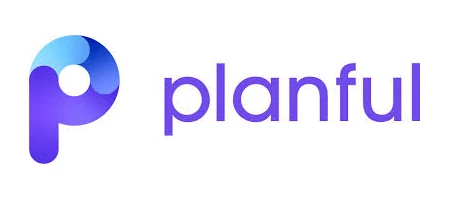
Planful Financial Planning Software

Planful is a Visionary in this Magic Quadrant. Its product, the Planful platform, offers cloud-based financial performance management, planning, budgeting, forecasting, modeling, as well as reporting and process automation. Planful is a private company expanding internationally but with the majority of its customers in North America. It serves clients in an array of verticals; its top three include manufacturing, technology and healthcare. An innovative feature is its budget manager homepage, which provides users with instant access to financial information customized to their department. In 2024, Planful expects to deploy new AI and ML features (including AI-driven financial narrative generation) and add customized algorithms.
Strengths
- Workflow automation: Planful provides an intuitive wizard and drop-down options for creating and maintaining FP&A workflows. Process status can be visualized at any time, and automated notifications are sent via email and Microsoft Teams, mitigating the need for FP&A to manually monitor and govern process execution.
- User adoption: Planful’s persona-based customization provides users with a curated, function-specific experience supported by an embedded digital assistant. It optimizes users’ homepages and navigation panes with the most relevant information, increasing adoption likelihood.
- Customer experience: Planful’s professional services, customer success, training and product architecture teams provide a comprehensive end-to-end customer experience, which users could find accelerates their learning curve. Support within normal licensing fees includes solution architect office hours.
Concerns
- Geographic reach: Although Planful includes global features such as currency conversion and global support, its market presence is primarily in North America, and it has limited language support. Prospective clients should carefully assess their global deployment needs.
- Vertical strategy: Planful does not provide any industry-specific starter kits or solutions. While software configurability and flexibility enable its professional services team and partners to configure for various industry needs, users should consider potential configuration costs and extended implementation timelines for any industry-specific requirements.
- AI/ML predictive analytics: The native AI/ML engine, Planful Predict, enables users to apply AI/ML to processes such as demand and cash flow forecasting. However, it only provides predefined external libraries of drivers via Python. Customers need to use Python or bring their own libraries into the application.
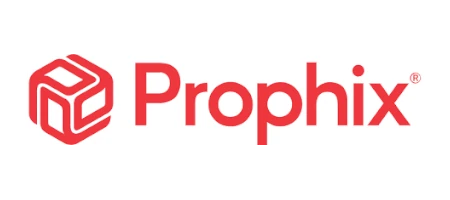
Prophix Financial Planning Software

Prophix is a Niche Player in this Magic Quadrant. Its product, Prophix FP&A, offers automated and integrated planning, budgeting, forecasting, financial consolidation and reporting activities on a single platform. Prophix is a private company with customers worldwide and the majority in North America. It serves clients in an array of verticals; its top three include manufacturing; professional services; and banking, finance and insurance. An innovative feature is its use of AI in its virtual financial analysis and natural language task assistant. In 2024, Prophix plans to enhance its back end to support complex resource management, demand planning and inventory planning models.
Strengths
- Scenario modeling: Prophix’s patented InfoFlex data transformation tool enables users to model the impact of different scenarios on cross-functional business outcomes across large datasets in real time with no coding. Users can run an unlimited number of scenarios simultaneously with scenario stacking and sandboxing.
- Data integration: Prophix includes specific prebuilt connectors to a range of popular and niche ERP solutions. Flexible APIs support various customer-specific APIs such as Sage, Ellucian and Acumatica. All data is stored in a centrally governed database, ensuring a unified and reliable source of information.
- Pricing: Prophix structures pricing based on the number of users, data integration requirements and user-selected features. The flexibility and transparency enable it to work with prospective customers to configure a value proposition that balances system requirements with budget.
Concerns
- ML forecasting: Prophix uses Amazon Forecast for ML-based planning with use cases for demand, expense and driver-based planning, requiring users to engage with the services team to adjust ML-generated forecasts. Users could find this limits autonomy, flexibility and ability to make real-time adjustments to their ML-generated forecasts.
- Version updates: Prophix schedules system updates for low-usage times and provides notification of updates, but customers must upgrade to new versions immediately. While a sandbox is provided to preview new versions, potential users should consider potential process disruption.
- Vertical strategy: Prophix has recommended models for six vertical industries, but it only provides an industry-specific starter kit for the construction/manufacturing industry that includes prebuilt financial, project and personnel models. Potential customers outside of the construction/manufacturing industry might find configuration is required to meet their industry-specific needs.

SAP Financial Planning Software

SAP is a Leader in this Magic Quadrant. Its product, SAP Analytics Cloud, combines BI, planning capabilities and predictive analytics in one cloud environment. SAP is a public company with customers worldwide and the majority in both Europe and North America. It serves clients in an array of verticals; its top three include retail, manufacturing and professional services. An innovative feature is its live reporting capabilities with real-time data, which allows users to augment locally constructed planning models with remote analytic models. In 2024, SAP plans to introduce planning as a service, extending its integration with SAP Datasphere, which can optionally serve as the data persistence layer for SAP Analytics Cloud.
Strengths
- Integration with SAP S/4HANA: Integration with SAP S/4HANA Cloud reduces the need to move data required for planning into separate solutions and provides one, real-time source for planning and actual data. Customers using SAP S/4HANA may see faster data integration and real-time data connectivity with this product.
- Capacity: SAP ensures optimal system performance with workload management techniques to ensure fair resource distribution and safety measures to cancel unhealthy loads. It aids users by suggesting ways to reduce back-end load and enhance user concurrency, which may be important to users seeking fast responses and support for many concurrent users.
- Market understanding: The company allocates diverse teams of industry and SAP experts internally, conducting market research to align product functionality with market demands and evolving user needs. Clients benefit from tailored solutions and improved efficiency through advanced technologies such as AI and IBP approaches.
Concerns
- Third-party connectors: While SAP invests in open APIs for import and export, some vendors offer a larger number of certified APIs. Some vendors also offer connectors for a wider array of ERP systems, including SAP’s and others, and integrate advanced features such as notifications and AI-powered data validation and reconciliation.
- Implementation: While SAP provides templates, starter kits and business content to help accelerate implementations, its implementation times are slower compared to other vendors’. Users seeking faster timelines should assess if these starter kits will meet their needs and align with accelerated implementation schedules.
- Third-party reporting integration: The company does not offer direct query integration with external analytics and BI tools. Customers instead integrate SAP data into third-party BI solutions using the SAC Data Export API or by providing access to planning data through ODBC/JDBC connections and OData for third parties.

Syntellis Financial Planning Software

Syntellis is a Niche Player in this Magic Quadrant. Its product, Axiom, is an enterprise performance management software with tools for budgeting, forecasting, planning, reporting and scenario modeling. Syntellis is a private company with the majority of its customers in North America. It serves clients with a vertical focus in healthcare; higher education; and banking, finance and insurance. An innovative feature is Axiom Visual Insights, which merges complex and disparate datasets and offers self-service tools to build and edit data models and create visualizations. In 2024, Syntellis plans to release market-based demand planning for predictions in the planning process.
Roper Technologies closed its acquisition of Syntellis on 7 August 2023 during the research period for this Magic Quadrant. During our evaluation phase, Syntellis met the inclusion criteria and was evaluated for this Magic Quadrant; Roper Technologies was not evaluated. Gartner will provide additional insight and research to clients as more detail becomes available.
Strengths
- Implementation strategy: In-house healthcare, higher education and financial institution consultants with software delivery experience lead Syntellis’ implementations. They initiate scoping meetings with clients collaboratively and develop a shared vision, mitigating risks and enhancing customer satisfaction and retention.
- Peer benchmarking: Syntellis harvests and aggregates data from business systems to provide users with real-time industry benchmarks and KPIs. It incorporates benchmarking data into planning applications, facilitating informed decision making and providing users with valuable insights to enhance their strategies.
- Insights and dashboards: Syntellis’ visual insights enable data blending from disparate sources to develop interactive dashboards and reports. Features such as decomposition trees support users in identifying business challenges, while drag-and-drop features aid in building custom visuals. Its view-only reports allow interaction by anyone inside of the product.
Concerns
- Vertical strategy: Syntellis focuses mostly on healthcare, education and financial institutions. Potential customers outside of the healthcare, education and financial sectors might require configuration to meet their industry-specific needs.
- Product roadmap: Syntellis’ recently delivered and upcoming product enhancements, such as integrating loan and deposit detail with cash flow forecasting and higher education program profitability modeling, cater to specific industries. Some vendors offer more forward-thinking roadmaps that include more advanced AI/ML, such as time series modeling and GenAI.
- Customer presence: The majority of Syntellis’ customers are midsize to large enterprise companies, and its customer base is concentrated in North America. Also, the software currently supports only four languages. Users could find these factors restrictive for complex global deployments.
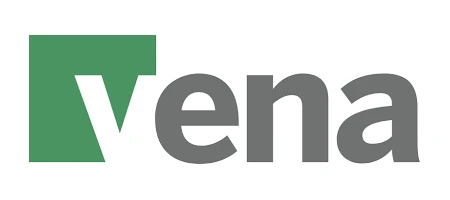
Vena Financial Planning Software

Vena is a Challenger in this Magic Quadrant. Its product, Vena Complete Planning, is a cloud-native platform integrated with Microsoft 365 that offers AI, ML and BI capabilities with data model templates for various use cases. Vena is a private company with customers worldwide and the majority in North America. It serves clients in an array of verticals; its top three include professional services; manufacturing; and banking, finance and insurance. An innovative feature is Vena Insights, which gives users a prebuilt interactive reporting package using AI- and ML-powered insights and anomaly detection. In 2024, Vena expects to release GenAI using Azure OpenAI for natural language questions and what-if scenarios.
Strengths
- Workflow automation: Vena’s workflow automation capability offers a low-code programming interface that automates any planning or reporting tasks for customers. It can also automate tasks to trigger data processing, multistep allocations and report distribution based on the workflow stage.
- Integrated planning: Vena offers an integrated planning functionality that includes native offerings of balance sheet logic, indirect cash flow logic and project-level capital planning. The balance sheet and cash flow logic reduce configuration time, and out-of-the-box, project-level capital planning gives users management capability not offered in all financial planning software.
- Implementation strategy: Vena works directly with clients to define goals and objectives, identify the project team, establish change management and user engagement, and prepare existing data for implementation. Implementations can benefit from this approach, which encompasses more direct involvement.
Concerns
- Product roadmap: Vena’s roadmap focuses on integrating with Microsoft 365 applications and Azure Machine Learning, which are integrations other vendors already offer. Potential customers should inquire about specific roadmap items they view as critical during the vendor evaluation process.
- Customer support: Vena’s included customer support hours are limited to Monday through Friday. It offers 24/7 support at an additional cost. Customers should evaluate their potential need for support on the weekends to determine if the extra support is necessary.
- API connectivity: For organizations planning to rely on data connections through APIs, Vena offers fewer APIs than other vendors. These APIs include connections such as Salesforce, QuickBooks, Microsoft Dynamics 365 Business Central, Sage Intacct and NetSuite. Vena has a roadmap for continued API development.

Wolters Kluwer Financial Planning Software

Wolters Kluwer is a Leader in this Magic Quadrant. Its product, CCH Tagetik, is an AI-based financial planning solution with real-time analysis, modeling and reporting, as well as data-enabled forecasts. Wolters Kluwer is a public company with CCH Tagetik customers worldwide and the majority in Europe. It serves clients in an array of verticals; its top three include manufacturing; professional services; and banking, finance and insurance. An innovative feature is its Analytic Information Hub, which harmonizes granular operational and financial data. In 2024, Wolters Kluwer plans to add NLP, AI chatbots and enhanced anomaly detection for extracting insights from data.
Strengths
- Integrated planning: Wolters Kluwer natively supports direct cash flow, indirect cash flow, balance sheet and capital budgeting, including IBP with multilevel planning and cross-functional collaboration. Its capital budgeting features cover project proposal, evaluation, prioritization, approval, performance monitoring and ranking.
- Market understanding: Wolters Kluwer demonstrates a strong understanding of existing and future trends such as ESG considerations, NLP-based planning, GenAI and AI/ML integration. This enhances planning agility, providing clients with innovations that help drive strategic advantages.
- Implementation support: Wolters Kluwer provides clearly defined phases, resource allocation, driver-based estimates, a user-involved RACI matrix and partner selection support with its implementation process. It also offers ongoing design oversight, an implementation timeline, design validation and project management resources for partners.
Concerns
- Data connectors: Wolters Kluwer offers a general-purpose REST API for bidirectional integration with various systems and a certified real-time connector with SAP HANA. However, it has a below-average number of supported APIs and certified connectors compared to the market average.
- Offering strategy: Although Wolters Kluwer’s product prioritization relies on customer collaboration, its approach lacks customer voting for more informed product development. Prospective clients should review the vendor’s product roadmap to ensure the vendor’s critical elements are prioritized and aligned with their specific requirements.
- Vertical strategy: Although Wolters Kluwer provides industry starter kits and vertical-specific solutions for manufacturing, retail and CPG, its vertical approach with partners is less comprehensive. Other leaders engage with global advisory partners for tailored vertical developments and incorporate partner-created solutions accessible through their marketplace.
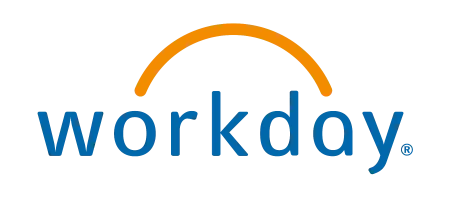
Workday Financial Planning Software

Workday is a Leader in this Magic Quadrant. Its product, Workday Adaptive Planning, is an enterprise planning and reporting platform that leverages ML for driver-based planning, scenario modeling and analysis. Workday is a public company with customers worldwide and the majority in North America. It serves clients in an array of verticals; its top three include professional services; technology; and banking, finance and insurance. An innovative feature is its patented Elastic Hypercube Technology, an in-memory database that allows users to update models in real time. In 2024, Workday plans to release its Predictive Forecaster, leveraging external data to create ML time series forecasts.
Strengths
- Implementation strategy: Workday uses certified partner resources across all phases, collaboratively mapping implementation activities with clients. Product implementation partners are required to recertify biannually, driving confidence in the quality of implementation services clients receive.
- Offering strategy: Workday uses a user-centric approach to prioritize features, collaborating with advisory groups and individual customers. It gathers feedback from its community of industry experts, informing product development with customer satisfaction. Early feedback from design partner groups ensures alignment with customer needs.
- Reporting tools: Workday enables report creation using Microsoft 365 with automated updates and unlimited view licenses for read-only dashboard access. Unlike some vendors who limit non-licensed users to PDFs, this Excel interface supports data hierarchy and dimension manipulation, which are important for effective data insights and decision making.
Concerns
- Predictive analytics: Although Workday uses AI in scenario planning across the general ledger, it does not employ AI for cash flow, working capital, demand or driver-based models. Users currently do not have access to confidence metrics and validation techniques, but these are planned within the next year. Additionally, Workday provides users the option to bring their own AI algorithms or models, a feature for advanced AI use cases.
- Scenario modeling: Workday’s scenario creation process uses a model-driven configuration and duplication approach instead of preconfigured features. In 2024, it plans to deliver personal what-ifs, allowing users to branch from an existing version to create multiple scenarios, compare them and select which scenario to merge into the base version.
- Data integration: Although Workday supports users with an embedded integration platform and a wide range of supported APIs, it offers fewer prebuilt connectors than some vendors in the market. Users should assess whether this product’s existing connectors and integration platform cover their data integration needs.
Inclusion and Exclusion Criteria
For Gartner clients, Magic Quadrant research identifies and then analyzes the most relevant providers and their products in a market. By default, Gartner uses an upper limit of 20 providers to support the identification of the most relevant providers within this market. On specific occasions, the upper limit may be raised when the intended research’s value to clients would otherwise be diminished. The inclusion criteria represent the specific attributes that Gartner analysts believe are necessary for inclusion in this research. Vendor solutions must align with the earlier market definition and successfully adhere to Gartner’s standard cloud service attributes as defined below.
To qualify for inclusion, solution providers were required to fulfill the following criteria:
Product Capabilities
- Support the core functionality of financial planning software (as defined in the Market Definition/Description section).
- Deploy software solutions as a cloud service. On-premises-only solutions will not be included within the assessment. If a vendor offers both on-premises and cloud options, the capabilities of the on-premises offerings and any hosted on-premises options will be ignored in the evaluation process.
- Actively market, sell and deploy these cloud solutions on a stand-alone basis, without the requirement to bundle it with other ERP modules, accounting systems or business process outsourcing (BPO) service contracts.
Market Presence
- Actively market and sell these products to organizations with at least 50% of customers having annual revenue above $50 million over the last year.
- Have at least 250 customers “live” by 31 December 2022 (with “live” defined as the customer using the current version of the software before the next version is released).
- Be actively sold and marketed, and have “live” customers using it beyond the vendor’s home region, including the Americas, EMEA, Asia/Pacific or Latin America.
- Have booked a cloud recurring subscription and support revenue of at least $25 million (or foreign currency equivalent) between 1 January 2022 and 31 December 2022.
Evaluation Criteria
Ability to Execute
Gartner evaluates vendors by assessing their product’s services, sales and marketing execution, and overall operations. Analysts evaluate how these criteria enable the vendors to be competitive and effective in the market, support their ability to satisfy customers, assist in creating positive perception and help them adequately respond to market changes.
In this Magic Quadrant, the product or service, customer experience and market responsiveness criteria are particularly important:
- Product or service encompasses the vendors’ ability to provide current product and service capabilities, quality, feature sets and skills.
- Customer experience evaluates the vendor’s capacity to deliver a journey that enables clients to succeed with the product or service.
- Market responsiveness ensures vendors continue to develop their products, remain flexible and achieve competitive success by taking opportunities to respond to changing customer needs and evolving market dynamics. This criterion also evaluates the vendor’s history of responsiveness.
Table 1: Ability to Execute Evaluation Criteria
Product or Service: High
Overall Viability: Medium
Sales Execution/Pricing: Medium
Market Responsiveness/Record: High
Marketing Execution: Low
Customer Experience: High
Operations: Low
Source: Gartner (December 2023)
Completeness of Vision
Gartner assesses vendors by evaluating their ability to articulate their perspectives on the market’s current and future direction, to anticipate customers’ needs and technology trends, and to address competitive forces. Analysts also evaluate Completeness of Vision by vendors’ understanding and articulation of how they exploit market forces to create new opportunities for themselves and their clients.
In this Magic Quadrant, market understanding, offering strategy, innovation and geographic strategy are also particularly important:
- Market understanding includes the vendor’s ability to understand and anticipate future buyers’ requirements and needs.
- Offering strategy involves using that information to shape or enhance the products and services offered.
- Innovation encompasses how vendors administer resources, expertise or capital for competitive advantage.
- Geographic strategy conveys a vendor’s ability to respond to customer demands and deliver value to organizations of different sizes across the globe.
Table 2: Completeness of Vision Evaluation Criteria
Market Understanding: High
Marketing Strategy: Low
Sales Strategy: Low
Offering (Product) Strategy: High
Business Model: Medium
Vertical/Industry Strategy: Medium
Innovation: High
Geographic Strategy: High
Source: Gartner (December 2023)
Quadrant Descriptions
Leaders
Leaders are in the strongest position to influence the market’s growth and direction and are quick to respond to provide mature offerings that meet market demand. They demonstrate a market-defining vision of how financial planning software can help FP&A leaders achieve their business objectives by providing oversight into financial and key operational data and enabling data-driven decisions, trend identification and essential insights for enterprise-wide planning. They also foster user collaboration within planning processes.
Their vision is reflected in their product roadmap, which not only focuses on enhancing core capabilities such as planning, administration and reporting but also extends into adjacent areas, such as data integration tools facilitating master data management, data quality, data completeness and capacity. Leaders are spearheading innovative ways to bring AI/ML into planning processes through diverse and pioneering use cases. They are also delivering meaningful, easy-to-understand prescriptive forecasts and recommendations as well as access to AI/ML outputs that include confidence levels and influencing attributes.
Leaders show a consistent ability to win new deals and service customers across a wide variety of geographies, industry verticals and organization sizes. Leaders have demonstrated effective use of their partners, such as systems integrators, consulting and technology partners within their product development, sales, marketing and customer implementation efforts. They have robust programs in place to ensure their partner network delivers quality implementations.
A Leader may not always be the best choice for every customer. A focused, smaller vendor that is not a Leader can sometimes provide superior support and commitment. Other vendors may provide a specialized capability that is essential for some organizations, such as specific industry support. A vendor that focuses on a specific vertical market or within a limited geographic area may not be a Leader in the overall market, but it may be a competitive option within its chosen market or area.
Challengers
Challengers exhibit strong execution and product capabilities that address their clients’ diverse planning needs by offering customizable solutions that automate workflows and data processing. They have established credibility, provide sufficient customer support and have a developed market recognition for their financial planning software products. They have a proven ability to win deals and are well-placed to succeed in the market. Challengers provide adequate customer experiences through formal service processes and service-level agreements, demonstrating an understanding of clients’ current financial planning goals.
Though Challengers exhibit strong execution capabilities and their available product features meet customer needs, their vision and roadmap are narrow, primarily focusing on enhancing core areas of planning, budgeting and forecasting. Their foray into innovation is typically more limited and less progressive than those of Leaders or Visionaries.
Challengers may suit organizations prioritizing execution through established product and support practices over product innovation. FP&A leaders should assess Challengers based on their current capabilities and gaps, evaluating the extent to which these gaps might hinder their near-term goals for achieving higher levels of future FP&A maturity.
Visionaries
Visionaries demonstrate a leading vision and robust roadmap, incorporating AI/ML technology and curating a portfolio of relevant patents tailored to financial planning software. They align with trends shaping or set to shape the financial planning software market, emphasizing the delivery of software enhancements, particularly highlighted by GenAI predictions. Their roadmap includes leading innovations, such as the introduction of a large language model (LLM), showcasing their leadership and forward-thinking approach within the financial planning software market.
Though Visionaries exhibit a strong and differentiated vision, they are limited in terms of market presence and execution or track record. Their customer base and operations are often concentrated in specific geographies, and they may lack industry-specific solutions to support certain sectors.
Visionaries may be an appropriate choice for organizations that want innovation from a vendor who does not yet have a significant presence in the market. This may offer a competitive advantage or a chance to influence the vendor’s product roadmap. However, given the comparatively limited market presence of Visionaries, organizations evaluating these providers should closely assess their ability to meet execution requirements for specific regions and industries.
Niche Players
Niche Players excel within specific segments or subsegments of the market but often lack the broad vision and innovative capabilities necessary to keep pace with competitors in the wider market. Although they may demonstrate innovation within their specific vertical, geography or functionality, they typically lack comprehensive attributes such as a deep market understanding, a well-defined product strategy and a comprehensive approach encompassing both vertical and geographic aspects of their offering.
Niche Players often provide optimal solutions tailored to the requirements of financial planning teams within specific industries, regions or use cases. They emphasize a customer-driven approach in their strategies, with several prioritizing scenario capabilities while also emphasizing visual insights and reporting. They present a compelling product tailored to address specific needs within a distinct set of buyers. Consequently, their operations, marketing and sales strategies are concentrated on a particular subsegment of the market. However, their capacity to consistently secure new business across diverse regions or industries may be less proven compared to other quadrants.
Although potential customers might assume vendors in the other quadrants are better choices for their financial planning needs, Niche Players can be a good choice for prospective users in certain circumstances. This is because they might focus on a specific capability, organization size, complexity, geography or industry vertical that is relevant to particular users. FP&A leaders evaluating Niche Players must understand their geography and solution focus to see how well it aligns with their functional objectives.
Context
As cloud-based financial planning software and analytics capabilities advance, they now offer access to more data sources, including transactional and operational data. This enables FP&A leaders to better support a wider range of operational needs. Additionally, the inclusion of AI capabilities such as predictive analytics and the evolution of NLP-driven insights indicates FP&A leaders are positioned to deliver more enhanced data-driven, decision-making capabilities to their organizations.
This Magic Quadrant evaluates vendors that have met Gartner’s criteria for the financial planning software market. FP&A leaders and their staff responsible for driving improvements in their financial planning processes should use this research as part of their market evaluation.
The following are key considerations and recommendations for assessing vendors that are best-suited to meet your organization’s needs:
Your organization’s primary use cases
Use cases vary by organization and are typically driven by organization complexity and expected outcomes (that is, prioritizing efficiency in the financial planning processes or improved operational visibility and management). Require vendors to demonstrate the ability to support both your current and future use cases. This will help identify solutions that could meet your organization’s changing business needs.
Implementation strategies and support
Ask questions about whether implementations are vendor- or partner-led and how much experience each solution provider has within your region and vertical’s technology ecosystems. Evaluate each vendor’s existing connectors to ERPs, CRMs and accelerators (that is, preconfigured tools to expedite implementation and integration), and vendors’ typical implementation time frames and costs. Assess your existing technology portfolio and how that technology stack would best integrate with the financial planning software you select.
Differentiating features and vendor roadmaps
Product development features and roadmaps differ between vendors. Ensure the selected vendor is focused on product development solutions that align with your organization’s expectations and future needs. Evaluate vendors’ current and future advanced analytics capabilities, such as AI and ML investments, external data integrations, scenario planning, alternate hierarchy support, workflow automation and collaboration functionalities.
Global support
Global and local regulations vary by country and are constantly changing. Prioritize what global functionality or support you need to generate fully transparent plans that support your organization’s decision needs, and compare these needs against the vendor’s capabilities.
Pricing models
Vendors in this market have pricing models mainly driven by user type, user volume or add-on support services. Features such as specialized AI capabilities, additional workspace beyond allocated limits and advanced ML functionalities might incur additional costs based on the vendors’ pricing models. Take time to evaluate which model is right for you based on your current and future growth projections.
Magic Quadrants are snapshots in time. To be impartial and complete in its analysis, Gartner stops the data collection efforts at a consistent time for all vendors. In the case of this Magic Quadrant, the product and service capabilities were required to be in production and generally available as of 30 June 2023 for the solution to be considered in this evaluation.
FP&A leaders should not use this Magic Quadrant in isolation as a tool for selecting vendors and products. They should treat it as one reference point among the many that will be required to identify the most suitable vendor and product. When selecting a solution, they should use this Magic Quadrant in combination with Critical Capabilities for Financial Planning Software.
Market Overview
The financial planning software market has shifted to meet the needs of FP&A leaders who are now seeking more agile processes to navigate the evolving landscape of enterprise-level risks, including the need for real-time predictive insights and flexibility in financial strategies. The transition from on-premises to cloud-based financial planning software reflects a broader trend toward SaaS offerings, facilitating faster implementation, improved ease of use and reduced dependence on IT staff for management. Additionally, these solutions provide adaptability and collaboration for tighter operational and financial performance feedback loops, extending their adoption across the enterprise.
This market will continue to be competitive, especially with continued external economic disruptions driving customer demand. We anticipate continued growth and transformation in the financial planning software market in the next five years. This transformation will be fueled by the increasing demand for FP&A leaders to actively guide their businesses through strategic decision making with more efficient planning and forecasting processes driven by AI and intelligent systems.
Market Trends
Today’s FP&A transformation efforts emphasize the need to optimize financial planning processes amid complex company operations and diverse, decentralized ERP and operational systems. Organizations are increasingly aiming for efficient and agile management in response to ongoing market changes. They seek on-demand processes that extract value-added insights, aiding in identifying risks and opportunities vital for driving organizational value creation. In response, vendors are developing new and progressive financial planning software, commonly deploying them as SaaS cloud offerings with a subscription-based pricing model.
Gartner has identified five noteworthy trends in the financial planning software market:
Increasing investments in AI/ML predictive capabilities
The market continues to invest in AI/ML capabilities, with new capabilities that are significantly enhancing adoption and operational efficiency. Vendors at the forefront of this evolution are leveraging AI to draw actionable insights from operational and external market data. This includes early anomaly detection, forecast bias identification and ML-driven predictive forecasting spanning multiple variables.
Additionally, vendors are focused on delivering smarter insights based on materiality thresholds and constraints, while deploying predictive forecasting that leverages transactional data. Advancements in AI/ML capabilities are expanding to serve a broader range of use cases, including cash, sales demand, and income statement revenue and cost forecasting. Vendor capabilities now extend beyond improving accuracy to accelerating the speed at which these forecasts and plans can be generated, enabling organizations to make timely and informed decisions based on real-time insights.
Greater transparency in AI/ML predictive results
The acceptance of AI/ML is accelerated by the transparent display of predictive results, showcasing confidence intervals and optimal models, which are set to substantially boost user adoption. Also, foundational elements such as capacity, data integration and master data management are gaining prominence as essential features for integrating predictive forecasting into future planning objectives. These predictive forecasting and analytics capabilities are positioned to continually elevate the intelligence levels within financial planning, fostering improved business outcomes.
Enhanced IBP through extended financial processes
Vendors continue to advance their ability to extend financial planning processes throughout the organization to a broader range of business applications, supporting connected planning across sales, marketing, supply chain, procurement, HR and IT. In particular, customers require broader source system integrations and higher capacity with the large data volumes and sources necessary to support IBP.
Evolution of NLP
The evolution of NLP can help FP&A leaders make more informed decisions by automatically processing and summarizing textual information as well as providing context to the numerical data displayed in dashboards. Today, these more advanced forms of analytics are a differentiator, but Gartner predicts in the next five years they will become more of a standard expectation as additional vendors include them in their offerings.
Increase in cross-functional collaboration
Stronger cross-functional collaboration is increasingly a key priority for organizations evaluating financial planning software. For large global organizations, the demand for better collaboration between different regions and functions is important to drive efficient and more meaningful forecasting and planning efforts.
Furthermore, with the move toward remote or distributed workforce models, organizations of all sizes are seeking more collaboration opportunities through their technology. Vendors continue to invest in integrations with sales and other operational tools to enable better internal collaboration, as well as digital assistants and portals to enhance customer collaboration.
Acronym Key and Glossary Terms
AI: Artificial intelligence
API: Application programming interface
BI: Business intelligence
BPO: Business process outsourcing
CPG: Consumer packaged goods
CRM: Customer relationship management
DAX: Data Analysis Expressions
EMEA: Europe, the Middle East and Africa
ERP: Enterprise resource planning
ESG: Environmental, social and governance
FP&A: Financial planning and analysis
GenAI: Generative artificial intelligence
IBP: Integrated business planning
JDBC: Java Database Connectivity
KPI: Key performance indicator
LLM: Large language model
M&A: Mergers and acquisitions
ML: Machine learning
NLP: Natural language processing
OData: Open Data Protocol
ODBC: Open Database Connectivity
RACI: Responsible, accountable, consulted and informed
Evaluation Criteria Definitions
Ability to Execute
Product/Service
Core goods and services offered by the vendor for the defined market. This includes current product/service capabilities, quality, feature sets, skills and so on, whether offered natively or through OEM agreements/partnerships as defined in the market definition and detailed in the sub-criteria.
Overall Viability
Viability includes an assessment of the overall organization’s financial health, the financial and practical success of the business unit, and the likelihood that the individual business unit will continue investing in the product, will continue offering the product and will advance the state of the art within the organization’s portfolio of products.
Sales Execution/Pricing
The vendor’s capabilities in all presales activities and the structure that supports them. This includes deal management, pricing and negotiation, presales support, and the overall effectiveness of the sales channel.
Market Responsiveness/Record
Ability to respond, change direction, be flexible and achieve competitive success as opportunities develop, competitors act, customer needs evolve and market dynamics change. This criterion also considers the vendor’s history of responsiveness.
Marketing Execution
The clarity, quality, creativity and efficacy of programs designed to deliver the organization’s message to influence the market, promote the brand and business, increase awareness of the products, and establish a positive identification with the product/brand and organization in the minds of buyers. This “mind share” can be driven by a combination of publicity, promotional initiatives, thought leadership, word of mouth and sales activities.
Customer Experience
Relationships, products and services/programs that enable clients to be successful with the products evaluated. Specifically, this includes the ways customers receive technical support or account support. This can also include ancillary tools, customer support programs (and the quality thereof), availability of user groups, service-level agreements and so on.
Operations
The ability of the organization to meet its goals and commitments. Factors include the quality of the organizational structure, including skills, experiences, programs, systems and other vehicles that enable the organization to operate effectively and efficiently on an ongoing basis.
Completeness of Vision
Market Understanding
Ability of the vendor to understand buyers’ wants and needs and to translate those into products and services. Vendors that show the highest degree of vision listen to and understand buyers’ wants and needs, and can shape or enhance those with their added vision.
Marketing Strategy
A clear, differentiated set of messages consistently communicated throughout the organization and externalized through the website, advertising, customer programs and positioning statements.
Sales Strategy
The strategy for selling products that uses the appropriate network of direct and indirect sales, marketing, service, and communication affiliates that extend the scope and depth of market reach, skills, expertise, technologies, services and the customer base.
Offering (Product) Strategy
The vendor’s approach to product development and delivery that emphasizes differentiation, functionality, methodology and feature sets as they map to current and future requirements.
Business Model
The soundness and logic of the vendor’s underlying business proposition.
Vertical/Industry Strategy
The vendor’s strategy to direct resources, skills and offerings to meet the specific needs of individual market segments, including vertical markets.
Innovation
Direct, related, complementary and synergistic layouts of resources, expertise or capital for investment, consolidation, defensive or pre-emptive purposes.
Geographic Strategy
The vendor’s strategy to direct resources, skills and offerings to meet the specific needs of geographies outside the “home” or native geography, either directly or through partners, channels and subsidiaries as appropriate for that geography and market.